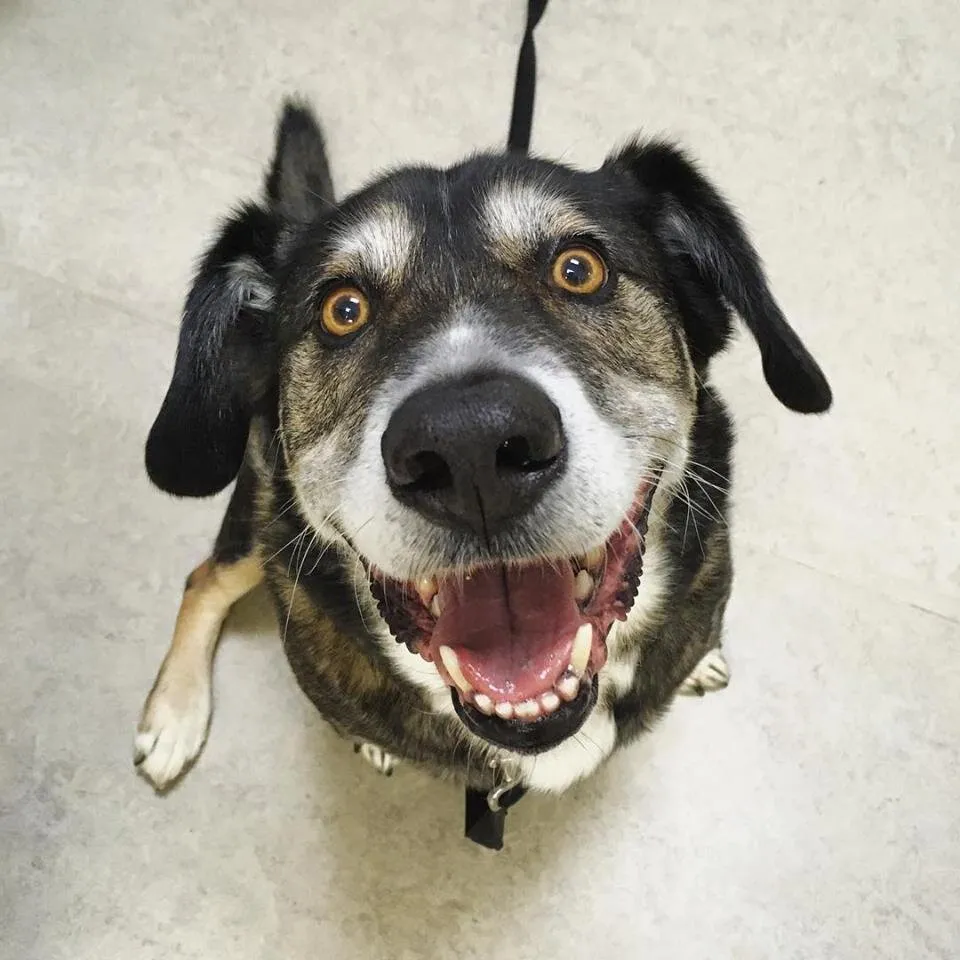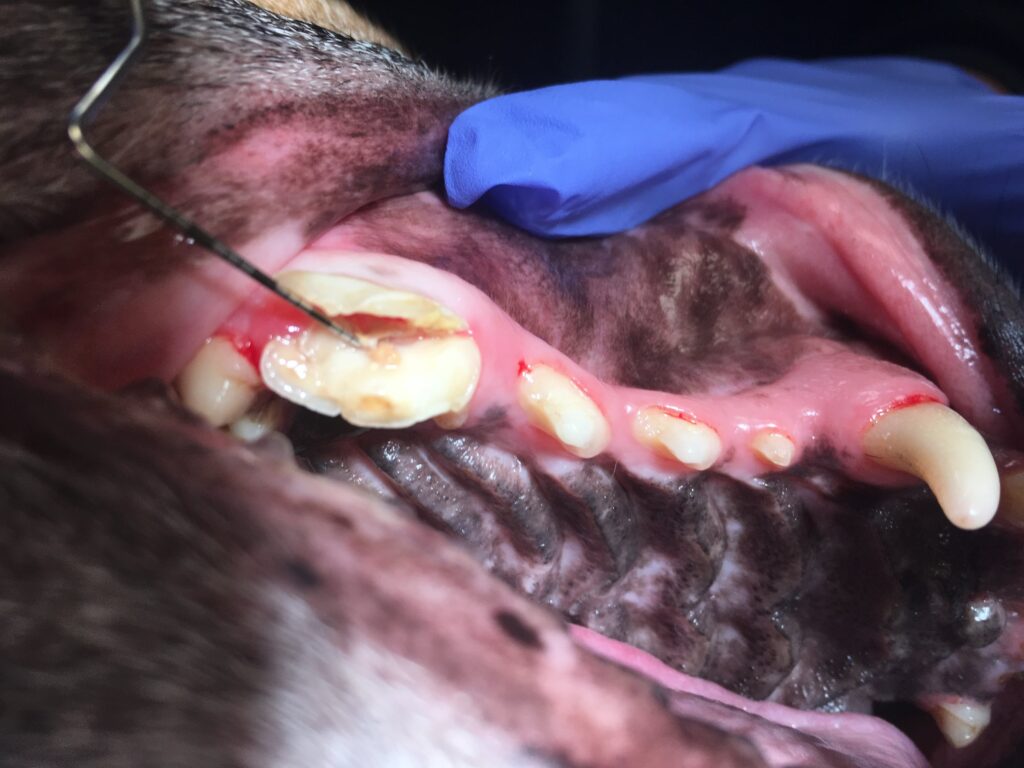February is Pet Dental Health Month!
February 22, 2018
Ever wondered what that smell was permeating from your pet’s mouth!?
Bad breath is a very common complaint among pet owners, and for good reason! Bad breath or halitosis is most often related to infection or inflammation in the mouth, and most often due to periodontal disease. This diagram shows the correlation between the various stages of dental disease in our pets’ mouths and what that would look like in our own mouths (be prepared – it’s not pretty!):

February is National Pet Dental Health month(goes to new website), so it’s a good time to revisit some fun facts on oral health that we presented a few years back:
-
Dental disease is undoubtedly one of the most common diseases veterinarians diagnose and treat. According to the American Veterinary Medical Association(goes to new website), approximately 80 percent of dogs and 70 percent of cats will have some degree of oral disease by the age of 3.
-
In the majority of cases, dental disease is a condition where “an ounce of prevention is worth a pound of cure.” Small preventative measures such as regular brushing can significantly slow the progression of tartar accumulation and subsequent periodontal disease. While daily brushing is by far the ideal, even brushing every 72 hours will make a significant difference in the amount of tartar accumulation on your pet’s teeth. Every three days is the minimum frequency recommended as beyond that the plaque will already have hardened into tartar, which cannot be removed via brushing.
-
Most dogs, and even cats, can learn to love (or at least tolerate) brushing — check out our video link here(goes to new website) for instructions on how to brush your pet’s teeth.
-
While the jury is still out on exactly how the low-grade infection associated with periodontal disease affects our pets systemically, in people there are consistent correlations between periodontal disease and systemic diseases such as diabetes, cardiac, and kidney disease, likely related to the chronic inflammation and infection originating from the mouth.
-
If brushing is out of the question, there are other options to help decrease the plaque and subsequent tartar buildup in your pet’s mouth. Look for products that carry the VOHC — Veterinary Oral Health Council(goes to new website) — seal of approval, such as CET products, Greenies, or antiplaque water additives. Most of these products need to be used on a daily basis to make an appreciable difference.
-
Routine brushing and home care can reduce the chances of needing aggressive or emergency dental care, such as tooth extractions and root canals for problems such as severe gingival infections or tooth root abscesses.
If you missed Dr. Gloor at the Aurora Hills Library this past Tuesday evening – she’ll be doing her Pet Dental Health lecture LIVE on Facebook(goes to new website)(opens in a new tab) Tuesday 2/27 @ 12:30pm!
And if you want the slides for the live video – click HERE(opens in a new tab)!
Have a topic you’d like us to write about? Email us (info@clarendonanimalcare.com)! We want to tailor these posts to the topics that interest you the most.

Related Posts

Baby Teeth Problems: Why does my dog require a surgical extraction if baby teeth are meant to fall out?
CAC Staff | April 19, 2023
Baby Teeth Problems: Why does my dog require a surgical extraction if baby teeth are meant to fall out?

The Chew on Chew Toys
Dental Health | March 21, 2019
Chances are that, in addition to chasing squirrels and keeping watch over the Amazon package delivery man, one of your dog’s favorite pastimes is chewing. Bones, rawhides, sticks…

